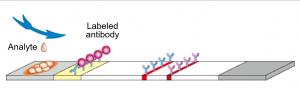|
The Korean Language consists of Native Korean words, Sino-Korean vocabulary, and loan words. Native Korean words refer to a word that is inherent in Korean. Sino-Korean vocabulary are words that are from China and can be written in Chinese characters. Loan words are words that come from foreign countries and are assimilated into Korean and are used as part of the Korean language. Loan words come from a foreign language, but this peculiarity does not change its status as part of the Korean language, because there is no Native Korean or Sino-Korean vocabulary to replace the loan word. There are other types of words that also originate from foreign countries but aren’t included in Korean. They are called foreign words but because there are existing words to replace them, they cannot be components of Korean. As such, Loan words coexist with Native Korean and Sino-Korean vocabulary to enrich the Korean language. Recently, the indiscriminate use of loan and foreign words in various media and product names has increased. There have been claims that overuse of loan words and foreign words are causing the disappearance of Korean words. What rules are there for use of loan words in Korean? What are some of the examples of loan words? Why do we need to be aware of the overuse of loan words? Let's find out.
Loan words originate from different languages, which can mean that its origin is different from Korean and its phonetic systems. Therefore, writing rules for loan words to fit into Korean is needed. There are two theoretical ways of writing loan words. One is to write them as close to the original sound as possible, ignoring Korean phonology*. But, in this case, people may have to ignore a spelling rule. They may use a character outside of the Korean consonants and vowels or allow writing that is not in the Korean phonology which might confuse language users. The other way is to write the word assimilated into phonology, even if it is somewhat different from the original. It may not sound like the original word but it won’t confuse users because it follows certain rules of Korean phonology to write the loan word. The rule for writing a loan word is 「 외래어표기법 」 which means "Notation Rules for Loan Words". It was promulgated on January 7, 1986, by the Ministry of Education. “Notation Rules for Loan Words” consists of four chapters: "표기의 기본 원칙", "표기일람표", "표기세칙", "인명 지명 표기의 원칙". These four chapters translate into "Basic Principles of Loan Word Notation", "List of Loan Word Notation", "Detailed Rules of Loan Word Notation", "Principles of Name, Place for Loan Word Notation". Chapter 1. shows all the basic rules needed for loan word notations.
* Phonology means the sound of a particular language
제1장 표기의 기본 원칙
- 외래어는 국어의 현용 24자모만으로 적는다. **
- 외래어의 1음운은 원칙적으로 1기호로 적는다.
- 받침에는 ‘ㄱ, ㄴ, ㄹ, ㅁ, ㅂ, ㅅ, ㅇ’만을 쓴다.
- 파열음 표기에는 된소리를 쓰지 않는 것을 원칙으로 한다.
- 이미 굳어진 외래어는 관습을 존중하되 그 범위와 용례는 따로 정한다는 것 등을 밝히고 있다.
**ㄱ,ㄴ,ㄷ,ㄹ,ㅁ,ㅂ,ㅅ,,ㅈ,ㅊ,ㅋ,ㅌ,ㅍ,ㅎ, ㅏ,ㅑ,ㅓ,ㅕ,ㅗ,ㅛ,ㅜ,ㅠ,ㅡ,ㅣ
Chapter 1. Basic Principles of Loanword Notation
Article 1. Loan words have to be written with only the 24 characters of Korean
Article 2. In principle, the first syllable of a foreign word shall be written as a symbol.
Article 3. For the final consonant only ‘ㄱ, ㄴ, ㄹ, ㅁ, ㅂ, ㅅ, ㅇ’ can be used.
Article 4. A rule to not use tenuis consonant(ㄲ,ㄸ,ㅃ) ** for writing plosives(ㄱ, ㄷ, ㅂ) ***
Article 5. Loan words that have already been commonly used and respect customs, but the range and usage of them are set separately.
** Tenuis consonants have the "plain" phonation of [p, t, ts, tʃ, k] with a voice on-set time close to zero, as Spanish p, t, ch, k or English p, t, k after s (spy, sty, sky)
*** In phonetics, a plosive, is a consonant in which the vocal tract is blocked so that all airflow ceases. The plosive may be made with the tongue tip or blade ([t], [d]), tongue body ([k], [ɡ]), lips ([p], [b]), or glottis ([ʔ])
|
Loan words originate from different languages, which can mean that its origin is different from Korean and its phonetic systems. Therefore, writing rules for loan words to fit into Korean is needed. There are two theoretical ways of writing loan words. One is to write them as close to the original sound as possible, ignoring Korean phonology*. But, in this case, people may have to ignore a spelling rule. They may use a character outside of the Korean consonants and vowels or allow writing that is not in the Korean phonology which might confuse language users. The other way is to write the word assimilated into phonology, even if it is somewhat different from the original. It may not sound like the original word but it won’t confuse users because it follows certain rules of Korean phonology to write the loan word. The rule for writing a loan word is 「 외래어표기법 」 which means "Notation Rules for Loan Words". It was promulgated on January 7, 1986, by the Ministry of Education. “Notation Rules for Loan Words” consists of four chapters: "표기의 기본 원칙", "표기일람표", "표기세칙", "인명 지명 표기의 원칙". These four chapters translate into "Basic Principles of Loan Word Notation", "List of Loan Word Notation", "Detailed Rules of Loan Word Notation", "Principles of Name, Place for Loan Word Notation". Chapter 1. shows all the basic rules needed for loan word notations.
* Phonology means the sound of a particular language
제1장 표기의 기본 원칙
- 외래어는 국어의 현용 24자모만으로 적는다. **
- 외래어의 1음운은 원칙적으로 1기호로 적는다.
- 받침에는 ‘ㄱ, ㄴ, ㄹ, ㅁ, ㅂ, ㅅ, ㅇ’만을 쓴다.
- 파열음 표기에는 된소리를 쓰지 않는 것을 원칙으로 한다.
- 이미 굳어진 외래어는 관습을 존중하되 그 범위와 용례는 따로 정한다는 것 등을 밝히고 있다.
**ㄱ,ㄴ,ㄷ,ㄹ,ㅁ,ㅂ,ㅅ,,ㅈ,ㅊ,ㅋ,ㅌ,ㅍ,ㅎ, ㅏ,ㅑ,ㅓ,ㅕ,ㅗ,ㅛ,ㅜ,ㅠ,ㅡ,ㅣ
Chapter 1. Basic Principles of Loanword Notation
Article 1. Loan words have to be written with only the 24 characters of Korean
Article 2. In principle, the first syllable of a foreign word shall be written as a symbol.
Article 3. For the final consonant only ‘ㄱ, ㄴ, ㄹ, ㅁ, ㅂ, ㅅ, ㅇ’ can be used.
Article 4. A rule to not use tenuis consonant(ㄲ,ㄸ,ㅃ) ** for writing plosives(ㄱ, ㄷ, ㅂ) ***
Article 5. Loan words that have already been commonly used and respect customs, but the range and usage of them are set separately.
** Tenuis consonants have the "plain" phonation of [p, t, ts, tʃ, k] with a voice on-set time close to zero, as Spanish p, t, ch, k or English p, t, k after s (spy, sty, sky)
*** In phonetics, a plosive, is a consonant in which the vocal tract is blocked so that all airflow ceases. The plosive may be made with the tongue tip or blade ([t], [d]), tongue body ([k], [ɡ]), lips ([p], [b]), or glottis ([ʔ])
A loan word is from languages other than Korean, but there are words that most users do not recognize as a loan word. The reason is because it has either been used for a long time or because they just sound like part of the Pure Korean or Sino-Korean vocabulary. Here are a few examples that surprise Koreans when they find out they are loan words.
Many of those tricky words seem to be originated from Japan. This is because Japan is very close to Korea, and the two countries influenced each other a lot. The exchange of words happened years ago. Some examples include: "구두", "냄비", "고구마" and "나시". “구두 (gudu)” refers to “shoes” in Korean. It is from the Japanese word “靴 (くつ, kutsu)”. "냄비 (nambi)” refers to “pot” in Korean. It is known to be originate from the Japanese word" 鍋 (なべ, nabe)”. “고구마”(goguma) means sweet potato in Korean. It’s from the word “孝行芋 (こうこいも, kokouimo)”, a Tsushima dialect meaning sweet potatoes. '나시(nashi)' refers to a sleeveless T-shirt or blouse in Korean and is from the Japanese word “袖無 (そでなし, sodenashi)”. Which means "no sleeves".
There are also tricky words with origins from western countries which have been moved to Korea via Japan. Japan has been in contact with the Netherlands and Portugal since the 15th century. So, Japan adopted a lot of western culture at that time, loan words from western society being one of them. As mentioned above because of their close proximity, there has been a lot of word exchanges between Japan and Korea including words from western countries. We put them to use starting a long time ago. Some of the examples are “가방”, “빵” and “고무”. The Dutch word “Kabas”, which means bag, became " 鞄(Kaban)" in Japan and became "가방(gabang)" in Korean again. "빵(pang)" in Korean means bread. It is derived from the Japanese word “パン(pan)”. “パン’(pan)” which is also a loan word originating from the Portuguese word " pão ". "고무(gomu)" is a Korean word meaning rubber. It is a term from the Japanese word "ゴム(gomu)". It is believed that the word “ゴム” is from the French term “gomme”.
Words that sound like Korean but turn out to be loan words directly from western countries include 망토(cape), 미라(mummy), and 지로(GIRO). The ”망토(manto)” is a loan word from the French word “manteau” which means “cape”. The word "미라(mira)," is also derived from the Portuguese word "mirra." which means the body of a human or animal that is not rotten and dried. "지로(GIRO)" in the 지로통지서, which comes out with the electrical or water bill notification, is also a foreign word. It came from the English acronym 'GIRO', which is written after the first letter of each word 'General Interbank Recurring Order'.
We can conclude that a loan word is a Korean word, and they coexist with Native and Sino-Korean vocabulary to make the language more diverse. That is applied not only for Korean but also all the loan words from other languages. However, too much use of loan words may likely lead to stereotypes that undervalue Native Korean and Sino-Korean vocabulary. Considering that the language of a country is a major part of a country’s identity, this is a serious problem. Public institutions, as well as mass media and product names overuse loan words and foreign words. This might be because they feel refined and elegant. To prevent such abuse, the National Institute of Korean Language has been producing "Pure words(순화어)" since 1977. A pure word is a newly created word used to replace loanwords. More than 21,000 pure words have been produced. They can be found on the website of the National Institute of Korean Language. Currently, the National Institute of Korean Language operates "Korean Language Management with Everyone." With the help of a campaign, pure words are continuously created, allowing them to replace the loan words and foreign words from time to time. Also, the government let the general public get involved in the campaign to make it an interactive and autonomous process. As a result, pure words are naturally distributed to the general public. Among them, there are some words that successfully replaced foreign words. Some examples are "뽁뽁이" to replace “air caps” and "댓글" to replace “reply comments”. Why don't we take a break from using loan words by looking for the pure language that replaces loan words?
|
|





